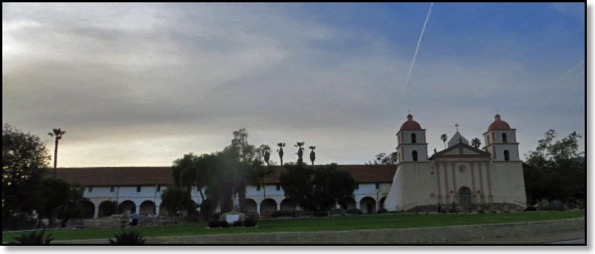Orchids Post Watercolor Butterflies on a Mission
Here, we celebrated Darius’ birthday..
“Dan!” Nazy interrupts. “Darius isn’t here. How could..”
“I said: ‘Here we celebrated Darius’ birthday’. I was going to mention that he was ‘there’.”
“That’s neither here nor there.”
“Precisely,” I replied, hoping to clarify the situation. “We used Mitra’s Google Hangout.”
“I know, Dan. I was there.”
“No, you were here.”
“You’ve milked it too long,” Nazy noted. Accurately.
The Martin Family (Mitra, Darius, Melika, Dan and Nazy) shared an international Google video call. We sang Happy Birthday and we waved at each other. Darius noted that he has become a television celebrity in Lebanon.
“I’ve been on an Iraqi news channel several times. I comment on economic matters in Japan, China, the Middle East and, coming up, Cyprus.”
“Do you know anything about Cyprus?” I asked.
“I going to be talking to a TV newscaster, Dad.” Darius sighed.
“Ah...so it’s not necessary to know anything.”
“Well, I’m going to Cyprus next week.”
“Won’t that disqualify you?”
“I didn’t tell them about the trip.”

Nazy and I are astonished by the variety of inexpensive orchids available here in Santa Barbara. We have two large ones growing outside and several smaller ones on window sills. In Zurich, Nazy adeptly convinced orchids in the kitchen to regenerate flower stalks. We’re hoping she’ll be equally successful here.
We continue to explore our new surroundings. Nazy has found several walking paths near the house. The Mission is very close:

We’ve also noticed an ancient jail - conveniently close to the house. (Just in case.)
“Ancient?” Nazy asked.
“Early 17th Century,” I replied.
“When we lived in Holland, we went to see the ‘New Church’ (Nieuwe Kerk) in Delft, Dan.”
“I know.”
“The new church was built in the 14th century.”
“Well..”
“And in Egypt, we heard about Christian churches that predated Christ.”
“For some reason, I questioned the veracity of that tour guide.” [Read about it here.]

Although the California missions are not ancient, they are relatively old and the one in Santa Barbara is really well-preserved. While our friends (Susie and Rob) were visiting, we saw the collection of Edwin Deakin watercolors of all 21 California missions. The curator spent a large amount of time with us - even though it was clear that we were not in the market for a $400,000 acquisition. Nazy, however, was inspired by the idea of painting to a theme.
“Missions,” I countered. “have been done.”
“I’m doing butterflies.”
“Why not start with something simpler, but with a similar theme.”
“Like?”
“Caterpillars? Aren’t they easier to paint? They can’t fly an they don’t move very fast.”
You can see Nazy’s latest watercolor by clicking here.
I’ve noticed a lot of ‘single-issue’ TV advertisements since our repatriation. Every night, for example, I hear about the devastating impact if Congress forces the US Postal Service (USPS) to stop Saturday delivery.
Note: The USPS has lost about $25B over the last five years. Essentially everyone agrees that the government needs to reduce spending. The conclusion is obvious:
“They should sell it to FedEx or UPS,” I said.
“It’s a government service. Can they do that?” Nazy asked.
“They privatized postal services in most of Europe. DHL owns Die Post in Switzerland. The world didn’t end.”
“But I thought Europe was more socialist..”
“.. than the land of the free (enterprise)? It is somewhat surprising that our country is so far behind. I thought that maybe the post office was an exception. It’s a service older than the US Constitution. Did you know that in the late 1700s, Benjamin Franklin created and ran a post office service that provided next-day delivery between Philadelphia and Boston?”
“They can’t do that now.”
“I know. I’m also working with a start-up in Holland. I’ve discovered that the US taxi market is far more regulated and controlled than the Dutch market.”
“Really?”
“Even Sweden is more, eh, free-market.”
P.S. The Post Office service of Benjamin Franklin is described in the book by Walter Isaacson.

